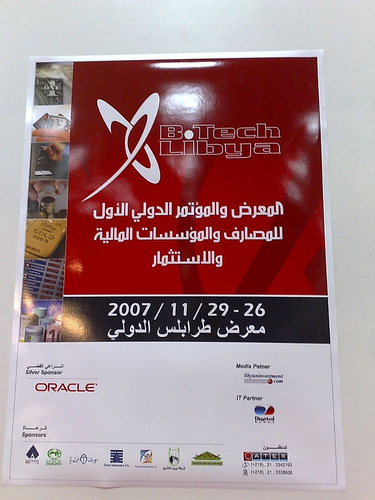Libya’s Internet penetration rate steadily increasing
In late 1997, Libyan Internet access was on par with service in Western Sahara, Gabon, Equatorial Guinea, Gambia, Somalia, Burundi. That is, none of these African nations even had email access. Amazingly, despite relative political stability and a geographical location south of Italy on the Mediterranean, Libya did not enjoy full Internet access until early in the year 2000. The following table, gleaned from ITU statistics over the years, shows a couple of characteristics true to Libya’s Internet growth:
| Dec 2000 | Jul 2002 | Jan 2004 | Nov 2005 | Sep 2007 | Jun 2010 | |
|---|---|---|---|---|---|---|
| Population (est.) | 6984400 | 7526600 | 5980693 | 6293910 | 6461454 | |
| Internet Users | 10000 | 20000 | 125000 | 205000 | 232000 | 353900 |
| Pen. Rate | 0.20% | 0.30% | 1.70% | 3.40% | 3.70% | 5.50% |
| User Growth (2000-date) | 100% | 1150% | 1950% | 2220% | 3439% | |
| % Users in Africa | 0.20% | 0.30% | 1.20% | 0.90% | 0.70% | 0.30% |
Notes:
- First off, Libya’s population figures tend to fluctuate, thus throwing off the Internet penetration rates by a small factor.
- The greatest period of Internet user growth came between 2002 and 2004. In less than two years, the penetration rate increased from 0.3% to 1.7%.
- Over the past 10 years, the trend of Internet penetration rate vs. time has remained linear.
- Disturbing is Libya’s lack of Internet user representation on the continental level. Essentially, Libya is adding fewer Internet users per year than the African mean.
Today, we must ask: what size user-base is needed to seed social media revolution? Assuming statistics are relevant for such a deep question:
According to 2010 ITU statistics, 34% of Tunisians have Internet access and 21% of Egyptians have the means to readily go online. However, Libya, with a much smaller population, has an estimated Internet penetration rate of 5.5%. In other words, for every 50 Internet users in Egypt, there is only 1 Internet user in Libya. Moreover, Libya’s Facebook penetration rate is roughly half that of Egypt – better, but still more of a challenge in terms of spreading knowledge. Similar comparisons can be made between the Libyan and Tunisian Internet and Facebook statistics.
Estimated Internet and Facebook penetration rates in Libya, Tunisia, and Egypt:
| Country | Internet Users (ITU 2010) | Facebook Users (IWS/SB) | Internet Pen. (ITU 2010) | Facebook Pen. (IWS/SB) |
|---|---|---|---|---|
| Tunisia | 3,600,000 | 1.7mm/2.2mm | 34.0% | 15.8%/20.5% |
| Egypt | 17,000,000 | 4.0mm/5.4mm | 21.0% | 5.1%/6.8% |
| Libya | 350,000 | 182k/300k | 5.5% | 2.8%/4.6% |
Based on these findings, it is apparent that Libya may not be able to utilize social media as efficiently as Tunisia or Libya to organize protests or spread word of the current regimes’ atrocities. However, these statistics do not reflect mobile penetration rates, which are sure to be much higher. On a positive note, a regime change will hopefully increase efforts to strengthen broadband infrastructure and to create a national ICT policy, something that Libya is currently lacking. Linear growth rates are great, but need to trend more exponential.
Sources: Internet World Stats and Socialbakers.













 Twitter
Twitter Facebook
Facebook Pinterest
Pinterest
[…] February 2011, we concluded that “a regime change will…increase efforts to strengthen broadband infrastructure and to […]
[…] February 2011, we concluded that “a regime change will…increase efforts to strengthen broadband infrastructure and to create a […]